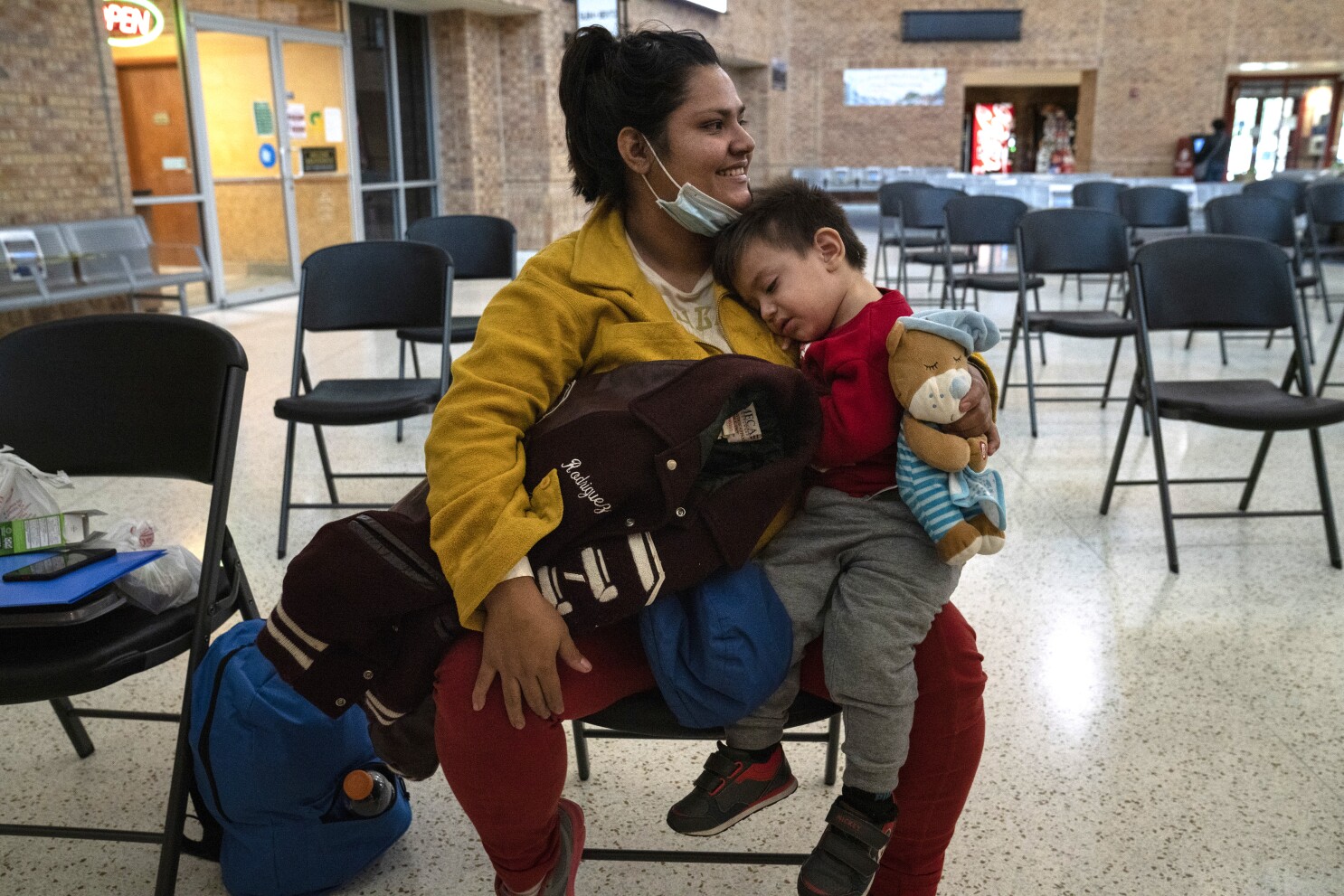The article below is a cobbled-together article from a variety of respected sources, all of them fiarly recent and all of them addressing the border, the border crisis, and the history of the border issues. In light of the constant litany of charges that “the border crisis” was all the Biden Administration’s fault, with little recognition of how long this problem has existed and no discussion of what all of the issues behind it might be, I decided to “copy and paste” some of the more enlightening articles out there…especially if they were current.
Apparently there are those who think that a problem this complex can be solved by simply throwing up a barrier, and that it should happen literally overnight, in the case of the Biden Administration in office only 100 days as of April 29th.
So, what, exactly, is the deal with the border wall, then and now? The following words from others are selections of articles, only, and this is far from the definitive word on the border and what has gone on there historically and is going on there now, but I thought you might enjoy reading some of the information for yourselves all in one place.
***********************
“Some 172,000 migrants were apprehended at the U.S.-Mexico border in March, the most in two decades. The problem is both push and pull: residents are driven out by hurricanes, crop failure, crime and corruption; they are drawn to the U.S. by family ties, work and stability in an economy expected to explode with post-pandemic opportunities, and an administration promising more humane treatment after the harsher Donald Trump years.
On Monday, VP Kamala Harris (delegated by President Biden to handle the crisis) meets by video with Guatemalan President Alejandro Giammattei in advance of a visit there and to Mexico in June. White House Press Secretary Jen Psaki said Harris would discuss sending immediate aid to Guatemala and “deepening cooperation on migration.”
Harris plans to hold a call with Mexican President Andres Manuel Lopez Obrador next week after a virtual meeting with Guatemalan community groups on Tuesday.
Officials and advisers say Harris will have to figure out a mix of short- and long-term steps, find non-governmental organizations to partner with and use carrots and sticks to fight corruption.”
HONDURAS
“U.S. prosecutors allege Honduran President Hernandez participated in a violent cocaine trafficking conspiracy. His brother was sentenced to life in prison for conspiring to smuggle almost 200,000 kg of cocaine into the the U.S. The effort was part of a state-backed trafficking operation that netted the president’s brother nearly $140 million, according to prosecutors.
President Hernandez was also cited in a separate case in the U.S. last month for allegedly participating in cocaine trafficking. He has dismissed the accusations as lies told by convicted criminals seeking to reduce their sentences and said he remains committed to fighting the drug trade.
Hernandez narrowly won a second term in a 2017 election that Organization of American States observers called “low quality” and whose result they refused to confirm. The country will hold a presidential election in November, and Hernandez is not running. That could allow the Biden administration to hold out hope for better leadership, but there’s little optimism that corruption there is a problem with an easy solution.
“The perception of impunity or the perception that people in positions of power can commit acts of corruption without consequence discourages the population and contributes to the sense that there is no future in their countries,” Zuniga told reporters after visiting.
FLEEING THE VIOLENCE
Central American migrants en route to the US starting their day departing Ciudad, Hidalgo, Mexico. (Photo AP/Moises Castillo)
“Migrants, including a growing number of women and children, are fleeing the troubled region in record numbers. On average, about 265,000 people have left annually in recent years, and this number is on track to more than double [PDF] in 2019. (And has, during DJT’s final years and now.]
Some migrants seek asylum in other parts of Latin America or in Europe. However, most endure a treacherous journey north through Mexico to the United States. Unlike past waves of migrants, in which most attempted to cross illegally without detection, migrants from the Northern Triangle often surrender to U.S. border patrol agents to claim asylum. In 2018, the United States granted asylum to roughly 13 percent [PDF] of Northern Triangle applicants, almost twice the 2015 acceptance rate [PDF]. Guatemalans currently account for the largest share of the migrant flow, followed by Hondurans and Salvadorans.
Agricultural setbacks, including unpredictable weather and a destructive coffee rust, have fueled food insecurity and become a leading driver of migration. Many households depend on money sent home by relatives living and working abroad. Remittances equal a comparatively large portion—almost 18 percent [PDF]—of the three countries’ economic output. Meanwhile, corruption and meager tax revenues, particularly in Guatemala, have crippled governments’ ability to provide social services.
Decades of civil war and political instability [PDF] planted the seeds for the complex criminal ecosystem that plagues the region today, which includes transnational gangs such as Mara Salvatrucha (MS-13) and the Eighteenth Street Gang (M-18). Critics say that U.S. interventions during the Cold War—including support for a coup in Guatemala, brutal government forces in El Salvador, and right-wing rebels based in Honduras known as the Contras—helped destabilize the region. Though they have declined somewhat in recent years, homicide rates in the Northern Triangle have been among the world’s highest for decades.
ECONOMIC INSTABILITY
Economic instability. The region’s most significant coordinated effort to address economic instability is the so-called Plan of the Alliance for Prosperity (A4P), which made commitments to increase production, strengthen institutions, expand opportunities, and improve public safety. Announced after a flood of Northern Triangle migrants arrived at the U.S.-Mexico border in 2014, the $22 billion plan is 80 percent funded by El Salvador, Honduras, and Guatemala.
Corruption. The region has made significant progress in its battle against corruption, a longtime drag on economies. In perhaps the most prominent example, Guatemala appealed to the United Nations for assistance in establishing an independent body to investigate and prosecute criminal groups suspected of infiltrating the government. Widely trusted by Guatemalans, the International Commission Against Impunity in Guatemala (CICIG) helped convict more than three hundred officials and significantly reduce Guatemala’s homicide rate.
Meanwhile, El Salvador has charged three former presidents with money laundering or embezzlement, and recently announced plans for its own international anticorruption panel. With the support of the Organization of American States, a regional bloc, Honduras also established a corruption-fighting committee and went so far as to fire 40 percent of its police during sweeping reforms in 2016, though citizen confidence in the force remains low [PDF].
What’s been the U.S. approach to the Northern Triangle?
Over the past twenty years, the United States has taken significant steps to try to help Northern Triangle countries manage irregular migration flows by fighting economic insecurity and violence. However, critics say U.S. policies have been largely reactive, prompted by upturns in migration to the U.S.-Mexico border.
Critics say U.S. policies have been largely reactive, prompted by upturns in migration to the U.S.-Mexico border.
George W. Bush administration. President Bush put trade at the top of his administration’s Central America agenda, negotiating the seven-country Dominican Republic-Central America Free Trade Agreement (CAFTA-DR), which includes El Salvador, Guatemala, and Honduras. Under his administration, the United States also awarded Northern Triangle governments more than $650 million in development grants through the Millennium Challenge Corporation. During its second term, the administration grappled more with security challenges, including rising crime and drug trafficking in the region, and it responded with an aid package for Central America and Mexico known as the Merida Initiative.
Barack Obama administration. President Obama separated Mexico from the Merida grouping and rebranded it the Central America Regional Security Initiative (CARSI) [PDF]. Over the years, Congress has appropriated more than $2 billion in aid through CARSI to help the region’s law enforcement, counternarcotics agencies, and justice systems. Midway through his second term, Obama recast U.S. strategy [PDF] for Central America, forging what was intended to be a more holistic interagency approach to complement the region’s A4P plan.
After an upswing in migration from the region in 2014, the administration partnered with Northern Triangle governments on anti-smuggling operations and information campaigns intended to deter would-be migrants. It also cracked down on undocumented immigrants inside the United States. Court-mandated removals during his administration outpaced those under Bush, totaling about three million. After Mexico, the Northern Triangle countries accounted for the largest shares of Obama-era removals.
Donald J. Trump administration. The Trump administration has kept Obama’s framework for the region, but has prioritized stemming the flow of Central American migrants to the United States and ramping up border security.
Many of Trump’s actions have stoked controversy and sparked legal challenges. In the spring of 2018, the administration implemented a zero-tolerance policy [PDF] that sought to criminally prosecute all adults entering the United States illegally, including asylum seekers and those with children. As a result, several thousand children were separated from their parents and detained in makeshift facilities, many of which were criticized for being in poor condition. Trump officially rescinded the policy following a public backlash, though separations have continued.
OCTOBER 1, 2019:
Photo courtesy of the Council on Foreign Relations
Apprehensions of Northern Triangle citizens have more than doubled so far this year (2019) compared with all of 2018.
Meanwhile, Trump has slashed hundreds of millions of dollars in Northern Triangle aid, and is holding back future funding until the region “take[s] concrete actions” to address migration. The administration also tried revoking temporary protected status, a program that allows migrants from crisis-stricken countries to live and work in the United States for a period of time, for Hondurans and Salvadorans.
This seems to have made the situation at the border worse.
CHILDREN AT THE BORDER
A growing influx of migrants has led to a record number of children – 3,200 – being held in US immigration facilities as of 8 March. (*This has supposedly shrunk to 600 unescorted children being held, as of late April, 2021, with faster turn-around on processing and at least four families reunited after the Trump administration removed children from their parental escorts and lost track of many of them. Two shown being reunited recently had been separated from their parents since 2017 and 2018, respectively.)
US media reported that the figure had trebled in the past two weeks. It was also reported that half of the children are being held beyond the legal three-day limit, after which they must be transferred to the custody of health officials.
In January, the month that Mr Biden took office, 5,871 unaccompanied children crossed the border – up from 4,995 in December – according to data from US Customs and Border Protection (CPB).
Are unaccompanied children being held?
Yes.
While in office, Donald Trump faced outrage over the conditions inside border facilities holding minors. Images from inside the detention centres showed children overcrowded in metal cages, others sleeping under foil blankets.
Some of these Trump-era facilities – now renovated and upgraded – are being used again.
Mr Biden has so far left a Trump-era Covid-19 emergency policy in place, which allows US authorities to expel almost all undocumented migrants seeking entry – bypassing normal immigration laws and protections.
But unlike Mr Trump, Mr Biden has decided not to refuse entry to migrant children or teenagers.
CHANGES UNDER BIDEN
Photo courtesy of the Los Angeles Times
“Advocates say that with most children arriving with plans to reunite with sponsors – typically friends or family – they should be transferred immediately to their care.
And according to preliminary plans obtained by US media, such a system may already be in the works.
The Biden administration is reportedly rushing to convert its existing facilities into “reception centres”, meant to rapidly process migrant families with the goal of releasing them into the US within 72 hours of arrival.
The proposal would replace long-term detention with Ellis Island-style processing, allowing migrants to travel to US sponsors before completing asylum screenings. The reports, from the Washington Post and the San Antonio Express, suggest a major overhaul of the US immigration system. All those processed are tested for Covid-19 before being transferred.
What is happening with the Remain in Mexico policy?
On Mr Biden’s first day in office, DHS suspended a controversial Trump-era policy that forced asylum seekers to wait in Mexico for their US immigration hearings.
About 70,000 migrants were enrolled in the Migrant Protection Protocols (MPP) – informally known as the Remain in Mexico program – since it was introduced in January 2019.
Last month, the Biden administration began to gradually process these tens of thousands of people waiting in Mexico, allowing them into the US while their cases are heard.
March 9, 2021
What’s happening to undocumented people already in the US?
Biden’s administration has taken several steps to reform the country’s legal immigration system.
He has proposed a major immigration bill that would offer an eight-year pathway to citizenship to the estimated 11 million undocumented people in the country.
The legislation would also provide permanent protection for young migrants in the Deferred Action for Childhood Arrivals (Daca) program, known as Dreamers.
The aggressively pro-immigration policy – which would greatly increase both family-based and employment-based legal immigration – will face staunch opposition in Congress, among Republicans and some moderate Democrats.
DIFFERENCES: THEN AND NOW
The White House has also started to focus attention on addressing root causes of migration in Central America, with Vice President Kamala Harris charged to shepherd an administration-wide effort to address conditions in El Salvador, Guatemala, and Honduras. The U.S. Agency for International Development (USAID) sent a team to the region in April to scale up emergency humanitarian assistance in light of the pandemic, aftereffects of hurricanes that struck in late 2020, and other challenges. Thus far, work with these countries has focused on short-term measures to reduce the pace of migrants’ arrival at the U.S. border. But the administration has consistently noted that long-term efforts to address poor governance and create economic opportunities in Central America will be key to stem irregular migration.
 We returned from Mexico (Cancun) on April 23rd and now we are battening the hatches in our Manchaca residence until the Family Fest, which usually coincides with the Fourth of July, which is only a couple of months away. (Plus, we come down earlier to help get ready for it.)
We returned from Mexico (Cancun) on April 23rd and now we are battening the hatches in our Manchaca residence until the Family Fest, which usually coincides with the Fourth of July, which is only a couple of months away. (Plus, we come down earlier to help get ready for it.)
























 According to ERCOT’s Fuel Mix report, the state’s largest energy source last year was natural gas as 46% of the state’s energy needs. Wind supplied 23% and, if properly weatherized as experts had warned the blades should be, these fixtures continue working in sub-freezing temperatures. Coal supplied 18% of the state’s power, nuclear 11% and solar only 2%.
According to ERCOT’s Fuel Mix report, the state’s largest energy source last year was natural gas as 46% of the state’s energy needs. Wind supplied 23% and, if properly weatherized as experts had warned the blades should be, these fixtures continue working in sub-freezing temperatures. Coal supplied 18% of the state’s power, nuclear 11% and solar only 2%.


 To me, it seems as though—just as Trump’s time in office revealed the true frailty of the U.S. in so many areas and destroyed our image abroad—this Texas freeze has revealed Texas’ image under Republican Governor Abbott as being full of holes. Texans like to think of themselves as hardy and “can do” types (just like Americans, in general, come to think of it). Well, we can do as long as we have power and water. When we have no water, things become dire fast.
To me, it seems as though—just as Trump’s time in office revealed the true frailty of the U.S. in so many areas and destroyed our image abroad—this Texas freeze has revealed Texas’ image under Republican Governor Abbott as being full of holes. Texans like to think of themselves as hardy and “can do” types (just like Americans, in general, come to think of it). Well, we can do as long as we have power and water. When we have no water, things become dire fast.